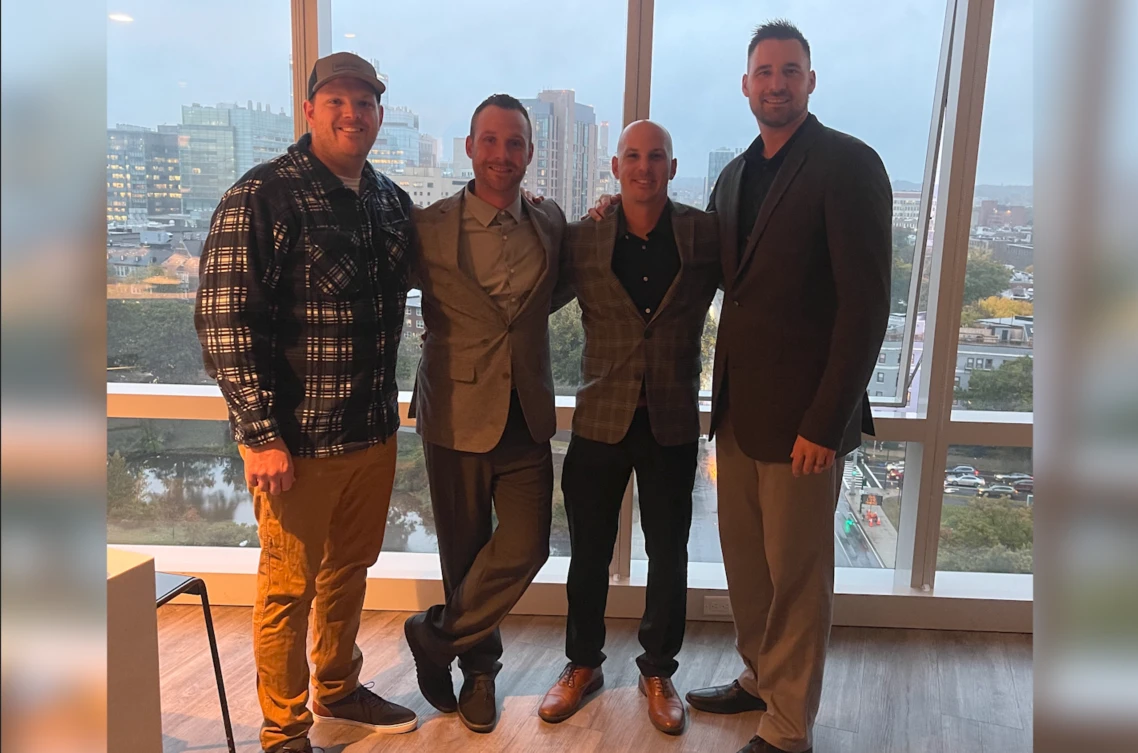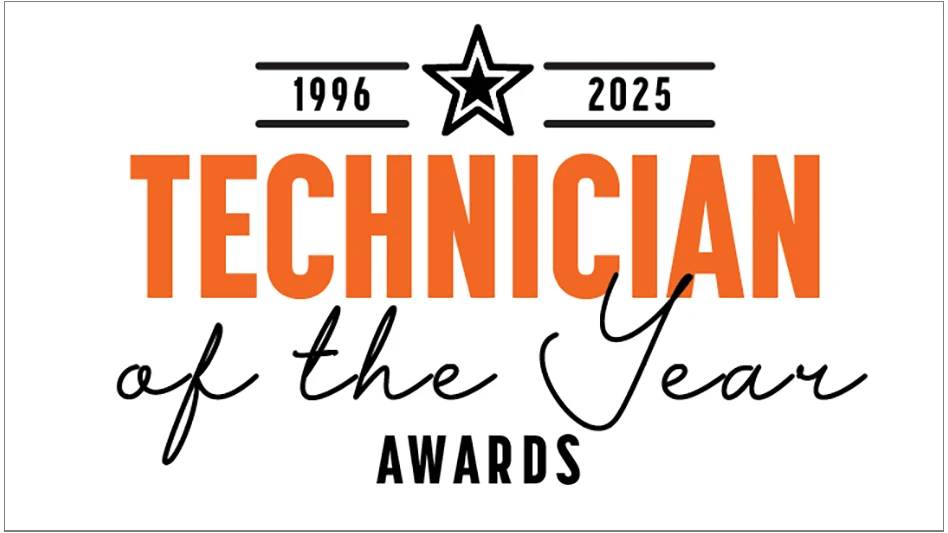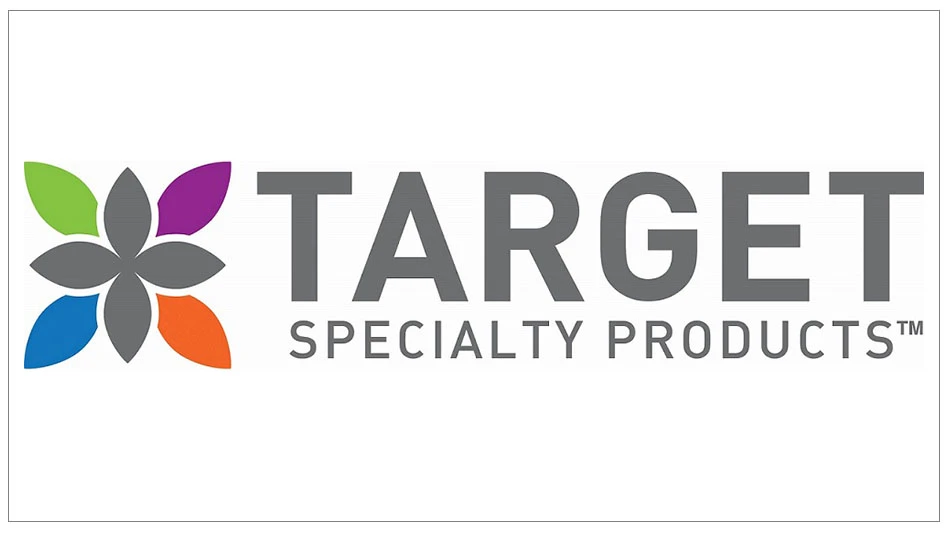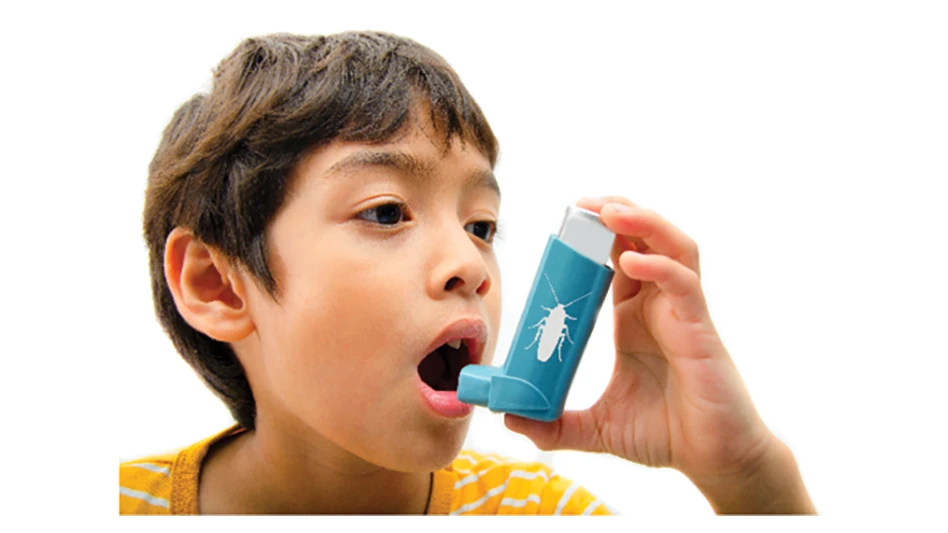The hottest topic in the pest con- trol industry today — bar none — is the issue of perimeter termi- ticide treatments. Attend any con- ference, visit any industry trade show, and it won’t be long before the topic of conversation turns to the pros and cons of perimeter termiticide treatments. And regardless of who is discussing the subject — PCOs, regulators, industry consultants, manufacturers — chances are the conversation is going to be animated because everyone has an opinion about this controversial topic.
Part of the challenge in getting one’s arms around this complex subject is that the concept of "perimeter treatments" means different things to different people. For some it’s defined as "exterior only" or "exterior mostly" treatments. Others prefer the term "partial" or "limited" applications. Still others choose to use the phrase "exterior perimeter with local interior treatments."
Although there’s no universal agreement on precisely how to define the term perimeter treatment, there is agreement about one thing. It’s a practice that is likely to have significant implications for the pest management industry for years to come. So, how did the industry get to this point?
A BRIEF HISTORY. Like most things in the pest control industry, termite control practices have evolved through the years. While chlordane dominated the market post World War II, followed by the ascension of Dursban TC in the late 1980s, application techniques remained relatively unchanged until the introduction of Sentricon in the mid-1990s.
At the time, "customers and the industry wanted something different," according to Orkin Technical Director Paul Hardy, and baits certainly filled the bill, providing a non-invasive, yet highly effective treatment option to homeowners weary of more traditional "drill-and-treat" termiticide applications. Consumers, moti-vated by an innovative consumer advertising campaign funded by Dow AgroSciences, turned to bait technology in droves, dramatically expanding the industry’s termite control business. Several other baits became available following Sentricon’s introduction, including FMC’s FirstLine and Ensystex’s Exterra.
Around the same time, some PCOs turned to a new class of chemistry developed by Bayer Environmental Science called Premise, the first in a new generation of non-repellent termiticides. In 2000, Aventis Environmental Science followed suit with the introduction of Termidor, a second non-repellent termiticide now marketed by BASF Professional Products, which also markets Phantom termiticide/insecticide. And in a sign that non-repellent termiticides are here to stay, Syngenta Professional Products anticipates registration of its thiamethoxam-based product, Optigard LT, in early 2006.
THE NEXT STEP. With so many new tools at their disposal, PCOs began offering customized termite programs featuring liquid only, bait, or a combination of bait and liquid treatments, in addition to various termite monitoring services. "The technology of non-repellents allowed us to do something different, like modified liquid programs," Hardy observed.
Now that non-repellent termiticides have performed so well in the field, and with new labels and use patterns on the horizon, many PCOs are interested in taking the next step — performing "perimeter treatments."
The potential viability of perimeter termiticide treatments gained widespread industry attention through a series of articles authored by Dr. Michael Potter of the University of Kentucky. The articles appeared in PCT magazine from February 1999 to February 2003.
In one early article, Potter wrote: "Despite their effectiveness, conventional applications of any liquid termiticide leave something to be desired. Perhaps their biggest limitation is that they are invasive to property owners. In an effort to treat all conceivable avenues of termite entry, companies often are required to drill walls and floors, cut tile, move carpet and other furnishings, and apply large amounts of pesticide in places where people live and work." And in an effort to take the discussion to the next level, Potter began to raise thought-provoking questions about a new type of treatment option — that of "perimeter-mostly" termite control.
"What if structural protection can be afforded by applying these products primarily around the exterior?" he wrote in PCT’s March 2001 issue. "If exterior liquid treatments eventually are adopted, it still would be prudent to ‘spot-treat’ infested or high-risk interior areas, as is commonly done with exterior bait applications. However, the 50-year habit of drilling every conceivable termite entry point ‘by the tape measure’ — with the associated labor, liability, intrusiveness, and cost to the consumer — seems unwarranted."
With the growing popularity of non-repellent chemistry, PCOs promptly began "pushing the envelope" of termite treatments. With preliminary research data in hand, many companies took the opportunity to change the way they performed termite control, understanding that "targeted" treatments using non-invasive application techniques would be an appealing combination for consumers, a combination that could enhance their bottom line if it didn’t make the bottom drop out of the cost of a standard termite job.
Against this backdrop of rapidly changing market conditions, and with so much potentially at stake, the regulatory community began working with the industry to address a wide range of issues relating to perimeter termiticide treatments.
REGULATORY QUANDARY. Through the label review and registration process, the U.S. Environmental Protection Agency provides the framework for a product, but each state regulatory agency actively enforces the use of products. So, while current labels of U.S. EPA-registered soil-applied liquid termiticides direct the applicator on how to accomplish a complete pre-construction or post-construction termiticide treatment, they do not prescribe what is needed for a successful partial or spot treatment. Some states have adopted minimum treatment specifications that address this issue, while others have not. In states without minimum treatment specifications, some applicators have and continue to make partial or spot treatments, in many cases with homeowner consent. Until EPA makes a decision on pending label amendments and the perimeter treatment use pattern, this current ad-hoc scenario will continue — a concern for state and federal regulators.
EPA agreed to consider amending current labels based on results from USDA field tests suggesting that with non-repellent ter-miticides, secondary effects take place in ter-mite populations. The Agency also is interested because an important EPA goal is the reduction of potential residential pesticide exposure, especially indoors. The process has been a challenge to EPA because this label amendment request doesn’t fit into the Agen-cy’s standardized label evaluation paradigm.
At press time, an EPA decision on label amendments was pending. EPA would like to announce a decision in 2004, but the seasonality of termite activity will not affect the timing of the Agency’s decision, according to Kevin Sweeney, senior entomologist, U.S. Environmental Protection Agency Office of Pesticide Programs. "The decision will be made after a thorough review of the supporting data, proposed labeling and a pesticide exposure assessment," he said. "This is consistent with the Agency’s policy of making decisions based on sound science."
A group whose input is critical in EPA’s decision-making process is the Association of Structural Pest Control Regulatory Officials (ASPCRO). Through its Termite Label Review Committee, ASPCRO has been cautiously moving forward in its evaluation of efficacy data submitted by registrants, university researchers and PCOs. Jim Wright, of ASPCRO’s Termite Label Review Committee, says once the committee has reviewed sufficient efficacy data and approved its label recommendations, it will present these findings to EPA as described in PR Notice 96-7.
"In my opinion, labeling is probably as big an issue as the continued compilation of efficacy data," Wright says. "If the labels aren’t done correctly and in a meaningful way I don’t care if you have the best product in the world, it will not work. I’ve not seen any product to date that will be completely successful if you do an exterior-only treatment with it. The way I see it, we need labels that provide meaningful guidance to the applicator as to how to use the product and how he should make assessments about how that structure needs to be treated."
While many are awaiting action from EPA and the states, others are wondering why the National Pest Management Association hasn’t weighed in on this issue. NPMA is not involved in the registration process as data goes from manufacturers to EPA, NPMA Technical Director Greg Baumann says. "It is too early to tell what will happen with the label changes. NPMA is not party to any data submittals, so it is tough to predict the outcome," he said.
INDUSTRY PULSE. With the regulatory community currently mulling over proposed label amendments, some PCOs are sitting back and waiting patiently, while other pest management professionals — in states without minimum treatment specifications — already are offering perimeter-mostly or perimeter-only termite services.
Middleton Lawn & Pest Control has been a pioneer in perimeter-mostly treatments in Florida — where this treatment is permitted because the state has no minimum treatment specifications. Since the introduction of Termidor in April 2000, Middleton has been offering "prescription treatments," in which targeted termiticide applications are made based on structure type and history of termite activity. In the last 3½ years, Middleton President Greg Clendenin estimates that the Orlando-based company has done about 10,000 such jobs.
At a bare minimum, on a home with a monolithic slab, a Middleton technician will make a perimeter termiticide application and also treat the bath traps. If termites are discovered under a floating or supporting slab, Middleton technicians will spot-treat the infested areas, in addition to treating the perimeter and bath traps. These spot treatments involve horizontal drilling the infested areas from the outside, in order to treat underneath the slab on the inside of foundation walls. Because less drilling is involved and fewer termiticide applications are made indoors, a Middleton technician can complete a prescription treatment in a half-day as opposed to a conventional indoor/outdoor application that would take 1½ days, Clen-denin says. As a result, he says, Middleton’s chemical costs have been cut nearly in half and labor costs have been cut by nearly two-thirds.
Clendenin’s confidence in this treatment is reflected in Middleton’s customer contracts, which all include a $1 million repair guarantee. This guarantee, coupled with the fact that customers’ walls and floors aren’t "left looking like Swiss cheese" since little drilling is done horizontally or indoors, has made prescription termite treatments popular with Middleton customers, Clendenin says. "At the same time we haven’t lowered our price because we’re selling a very technical treatment with an unbelievably customer-friendly contract and a million dollar guarantee that comes with the package," he says.
Technically, Middleton is not performing perimeter-only treatments since at a minimum bath traps (and any infested areas) will be treated in every structure. But a growing number of PCOs believe that non-repellents are effective enough to work as perimeter-only applications on monolithic slabs. In fact, some PCOs, whose accounts consist primarily of monolithic slab homes, offer perimeter-only treatments with non-repellent termiticides and they are reaping benefits similar to those realized by Middleton.
Others are not in favor of perimeter-only treatments. Lanier James, president of James Pest Management, Memphis, Tenn., says he performed a series of perimeter-only treatments — meaning nothing on the interior was treated — on 20 homes and experienced seven failures. These results were enough for James to abandon this type of service in favor of traditional termiticide applications inside and outside of a structure.
"We want to do everything we can to prevent termites from getting into a structure and to stop termites that may already be there," James said. "We want to treat all available possible entry points including internal joints, treating under supported slabs and areas around pipes that penetrate into the slab."
Also of concern to James is the technician’s role in perimeter-only treatments. "It takes skill and craftsmanship to be thorough and to treat potential entry points indoors," he says. "There’s a craftsmanship involved in vertically drilling indoors so that you are not only missing pipes but also limiting defacement to the structure. I don’t want to see our industry get away from teaching the craft (of termite control)."
Still other PCOs — especially those in states with minimum specification requirements — are interested in perimeter-only services but are awaiting pending label changes.
Steve Arnold of Peachtree Pest Control, Atlanta, has used two different non-repellent products (Premise and Termidor) and says he has "had great success with both." Peachtree offers outdoor perimeter treatments with non-repellent termiticides for termite control; however in Georgia, regulations do not recognize a perimeter treatment as a complete termite treatment. "We offer a baiting program with a directed application — perimeter treatments — paying special attention to critical area treatments," he said.
Arnold says he thinks the trend of such treatments is commonplace in his market. "As we are all aware, the public wants less pesticide and better control, a trend that has been on the increase for many years now. With the advent of baiting, it seemed as if our prayers had been answered, only to discover once again there are no silver bullets."
"Now with the rise of non-repellents — again, no silver bullet — we now have the opportunity to combine both non-repellents with baits to begin a new era in termite control, " he added.
WAIT AND SEE. While PCOs and regulators continue to evaluate the pros and cons of perimeter-only and perimeter-mostly applications, those with the most to gain or lose from how the industry ultimately responds are the manufacturers. Both Bayer Environmental Science and BASF Corporation have invested a significant sum of money in the technology, betting their future — to a greater or lesser degree — on the continued growth of this product category. Consequently, both manufacturers have been actively pursuing registration of a perimeter treatment label for their respective products, working closely with the regulatory community to address the issue in a proactive fashion.
"We began our conversations with the regulatory community on the concept of perimeter treatments over five years ago, and we have maintained a more or less constant dialogue with them," says Dr. Nick Hamon, director of development and technical services for Bayer ES. "Our label drafts have been reviewed not just by ASPCRO, but by individual regulators from several states. We have fully shared our performance data with the regulators, and we continue to extend our demonstration program across the country with cooperators from more than 15 institutions."
BASF has taken a similar approach. "We learned fairly early on during our initial EUP work that a full label treatment with Termidor may not be necessary to gain control of termites in every structure," says Senior Marketing Manager Karl Kisner. "Since coming to that conclusion we’ve worked closely with ASPCRO and EPA to try and develop label language in support of a perimeter treatment label with localized interior treatments. Throughout the process we’ve exceeded the data requirements required in their protocols in an attempt to craft a label that addresses the concerns of all the parties involved."
The hope is that if all of the stakeholders work cooperatively on this potentially contentious issue, the marketplace ultimately will be served. "We will continue to address the concerns of regulators to ensure the label language for this type of use is enforceable, comprehensive and straightforward so that it is not burdensome to the PMP," Hamon says.
BASF Market Development Manager Dr. Mark Coffelt, agrees. "We have taken a proactive approach in working with the regulatory community to ensure that we produce the best label for all involved. It’s a balancing act between what is best for the PMP, the manufacturers, the regulatory community and ultimately the consumer.
"Let’s not lose sight of the primary objective of every termite treatment — protection of the structure," he added. "And if a PMP can do that with reduced pesticide use in and around the home, lower labor costs and less time on the job — yet obtain equal performance to a full conventional treatment — it’s a win-win for everyone involved."
Dr. Dan Kidder, technical manager for Syngenta Professional Products, which is in the final year of a three-year commercial EUP program for its new Optigard LT product featuring non-repellent chemistry, said the company is developing products that provide an integrated approach to termite control. "We believe that standalone perimeter treatments with non-repellent termiticides are a valuable practice in some circumstances," he said. "However, in areas with heavy termite pressure and certain soil and environmental conditions, reliable structure protection requires an integrated system approach."
CONCLUSION. At no comparable period in the industry’s history have PCOs had more cutting-edge tools from which to choose when it comes to termite control. From baits and borates to repellent and non-repellent termiticides, from pesticide-impregnated sheeting to foam applications, the industry’s toolbox is brimming with control options.
"We have quality tools and PCOs should make their own decisions," industry consultant George Rambo says. "We haven’t changed methods, equipment, rates…the chemicals are the only thing we’ve changed. Yet people are seeing lower and lower retreat rates. Why? The non-repellents are simply more forgiving."
Ultimately, the treatment techniques that best fit a company’s business model will determine the mix of termite products and services offered by one’s firm. As long as PCOs are open and honest with their customers — being up front regarding the type of treatment and the guarantees/warranties that their company offers — it shouldn’t matter whether they’re offering a "perimeter-only," "perimeter-mostly" or standard termiticide treatment. But the question remains whether or not clients understand the intricacies of "partial" treatments. PCOs performing these treatments would be wise to include disclosures in their service contracts and/or guarantees relating to such treatments.
"To me, what’s important is this: Does the homeowner know what they’re buying from us? PCOs are doing a disservice to the homeowner if they don’t present all available termite control options, including perimeter treatments," says Rick Cooper, technical director, Cooper Pest Control, Lawrenceville, N.J. "A responsible industry will use pesticides only when necessary. If you’re up front with clients about the type of treatments you’re providing, then I don’t see how perimeter treatments are hurting anybody."
The authors are Internet editor, editor and publisher of PCT magazine, respectively.
WANT MORE?
Enter your email to receive our newsletters.

Explore the March 2004 Issue
Check out more from this issue and find your next story to read.
Latest from Pest Control Technology
- Richard Christner on Colorado's State Preemption Roll Back Affecting Business Growth
- How to Get Rid of Odorous House Ants
- Massey Services Promotes Herndon to Director of Sales for Multi-Family Division
- NPMA Announces First Recipients of NPMA PRO Certified Credential
- Pestmaster of the Hudson Valley Acquires Catskill Animal Damage Control
- Photo Slideshow: Ant Identification Tips
- Video: Top 10 PCT Photo Contest Finalists
- UF/IFAS Study Reveals Boats as Perfect Vessels for Global Termite Spread









